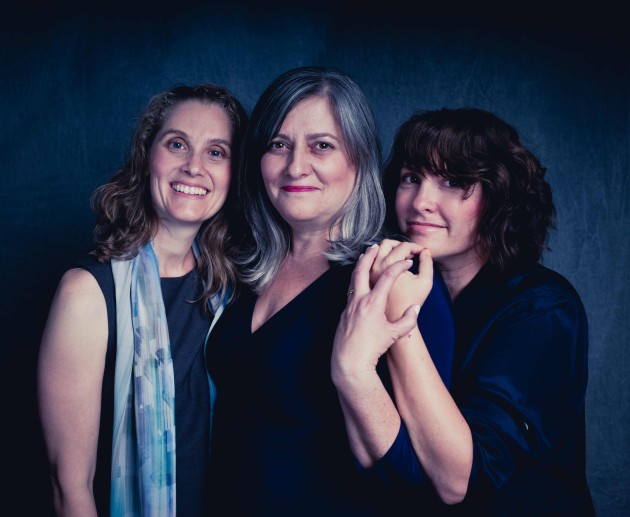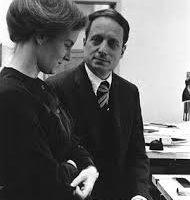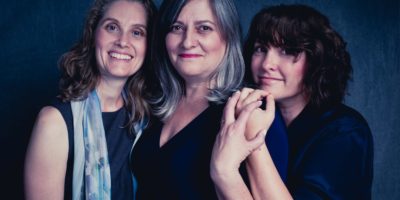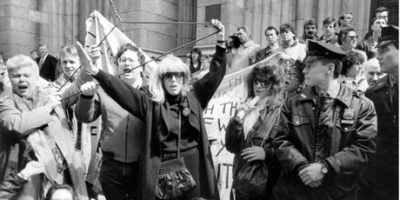Lilith Feature
Why L.A.? Why Women? And Why Now?

From left: Rabbi Susan Goldberg, Racelle Rosett, Jill Soloway. Photograph by Daniel Sawyer Schaefer, outlierimagery.com.
“Everything loose rolls west,” my mother observed when I moved to Los Angeles 22 years ago. People have always gravitated here to escape conformity, create provocative innovations in the arts and explore spiritual aspects of themselves. Increasingly, these explorations include Jewish identity.
Los Angeles Jews are borrowing the best from other cultures — a little like the hybrid Korean tacos so prevalent in our city’s food trucks — to create something new, relevant and delicious in the ways we worship and connect. Most of these new initiatives, often attracting elusive unaffiliated Jews, are led by women who are altering the way Jewish Angelenos eat, pray, love and live — and creating waves across the country.
In a city that boasts some of the largest “mega-shuls” in the country, people are craving more personal connection. Women rabbis and leaders are paying attention and creating communities offering intimacy and inclusion, all without sacrificing intellectual rigor.
There are proudly gay observant Jews, drum circles on the beach during Tashlikh at the new year and unprecedented collaborations between Jewish organizations of different denominations. And there’s Rabbi Sara Brandes, who leads the Minyan Kol Chai (an hour of yoga, davening and study) in the Los Angeles suburb of West Hills, where yoga is “a wonderful tool to prepare for Jewish prayer.”
Here’s what else is in the mix. Rabbis Sharon Brous, Naomi Levy and Susan Goldberg are creating welcoming places of worship, reflection and social action for “disconnected” Jews. Rabbi Laura Geller, in the pulpit at Temple Emanuel of Beverly Hills since 1994, paved the way for women to be taken seriously as leaders of major Jewish religious and spiritual entities in this town where tradition is suspect. Yiddishkayt, a new Yiddish cultural organization that draws inspiration from L.A.’s diversity, proudly identifies as “outside the confines of academic and religious institutions.” Los Angeles is home to the largest community of Jewish Iranians (or “Persians,” as they call themselves) in the world, many of whom moved here after Iran’s 1979 revolution. Writer Gina Nahai and comedian Debbie Jhoon are communicating the aspirations and frustrations of this immigrant community, helping it find its voice and its footing. Jill Soloway and Ayana Morse of East Side Jews are invigorating hipsters and young families via a mix of social connections and creative education programs. Women like these are challenging expectations and breaking boundaries all across this sprawling city, where in the past Jews often came to reinvent their identities.
—–
“I wanted to make people comfortable enough that they could sit in that room — but uncomfortable enough that they would actually feel something.”
–Rabbi Sharon Brous
Rabbi Sharon Brous has the special sauce that mainstream Judaism craves. She was named the #1 Rabbi on The Daily Beast /Newsweek list of America’s Top 50 Rabbis for 2013, with her organization Ikar (Hebrew for “essence”), which The Daily Beast describes as a “come-as-you-are spiritual community,” and “a magnet for L.A.’s young, unaffiliated Jews… The Ikar model: equal parts warmth, spirituality, intellectual rigor, and call to action.”
Brous founded Ikar in 2004, soon after she was ordained at the Jewish Theological Seminary. Her own religious and spiritual journey led her from a deep sense of alienation to eventually finding a meaningful way in. After seminary and a rabbinic fellowship at B’nai Jeshurun in Manhattan (a spiritually vital, social-justice-oriented congregation), she moved to Los Angeles so her husband could pursue his career as a comedy writer. “I found that the most interesting young Jews I met in L.A. were hungry for community, spiritual depth, even ritual, but didn’t connect with institutional Jewish life. I began to realize that what people were rejecting was not Judaism, but more established forms of Jewish religious life in America, such as the strict set of rules around conduct in services.”
She was looking to move, challenge and inspire people, to reframe core aspects of Jewish life as spiritually rich and meaningful, and push people to consider what it means to be a human being in a world rife with violence, hunger, poverty and daily struggles. “I held a couple of Shabbat services in my living room — but everyone who came was already an insider,” Brous explained. “Then I met Melissa Balaban, one of the deans of the law school at USC, with her husband and a few friends who had given up on finding a synagogue they could connect with in L.A. We talked for hours. Our visions of what was possible in the Jewish world aligned deeply. We were, as we said that night, cautiously ecstatic, as if we were on the cusp of building something that mattered. Melissa said I should go home and write down my vision — we were going to make it happen.”
“The thing that really spoke to us is the idea that Judaism shouldn’t be compartmentalized,” continued Balaban. “Your Jewish life, spiritual life, political life, should all be integrated. How can you be a Jew engaged in religious life and not have that change who you are in the world? How can you be a Jew working for justice and not understand that Torah animates that work?”
Brous was concerned that at the turn of the millennium, religion was defined by extremism and insularity on the one hand and alienation and disconnection on the other. She dreamed of creating a space for a return to prophetic Judaism, infused with spirit and activism. Her formula turned out to be inspirational. “We (Brous, Balaban and an initial core group) sent our vision statement to a few friends each, saying ‘If the idea of reclaiming your Jewish life resonates, come this Friday night. Let’s see what we can build’. It went viral. It was right before Pesach, and about 135 people showed up. What was amazing is that there were multiple points of connection in that room, from law school to camp, to growing up in Philly. We realized these people wanted to be around each other, and it was creative engagement with Judaism that was bringing them together.”
Brous sought to “make people comfortable enough that they could sit in that room — but uncomfortable enough that they would actually feel something.” With Ikar, she started addressing moral conundrums, including taking an open-eyed look at Israel and engaging in uncomfortable dialogue around issues like immigration and gun violence.
She has worked hard to reintroduce emotion into the prayer service, including the element of surprise. No two services are ever the same. “We’re different people every week — why should the service always stay the same?” She is not afraid to go off-script, “to express struggles, challenges and ambivalences without questioning peoples’ loyalty and their love.”




